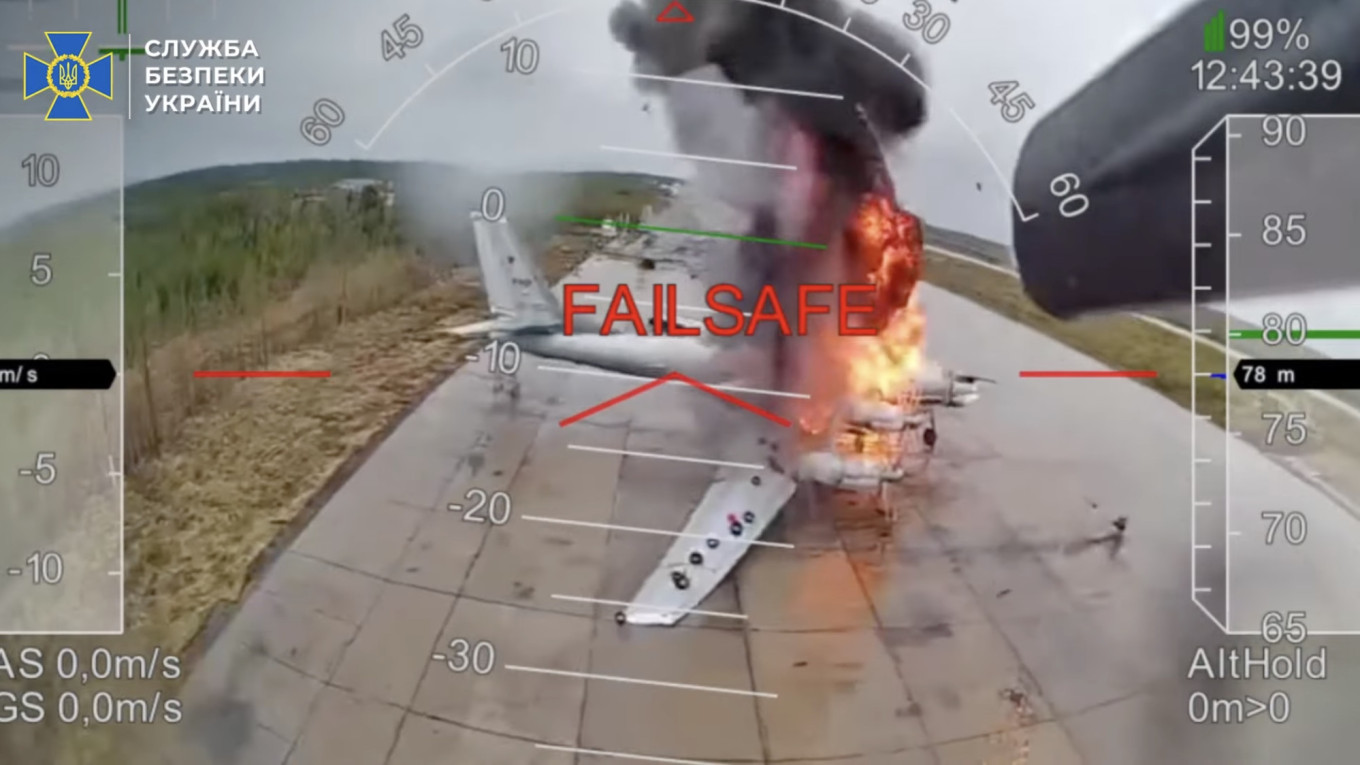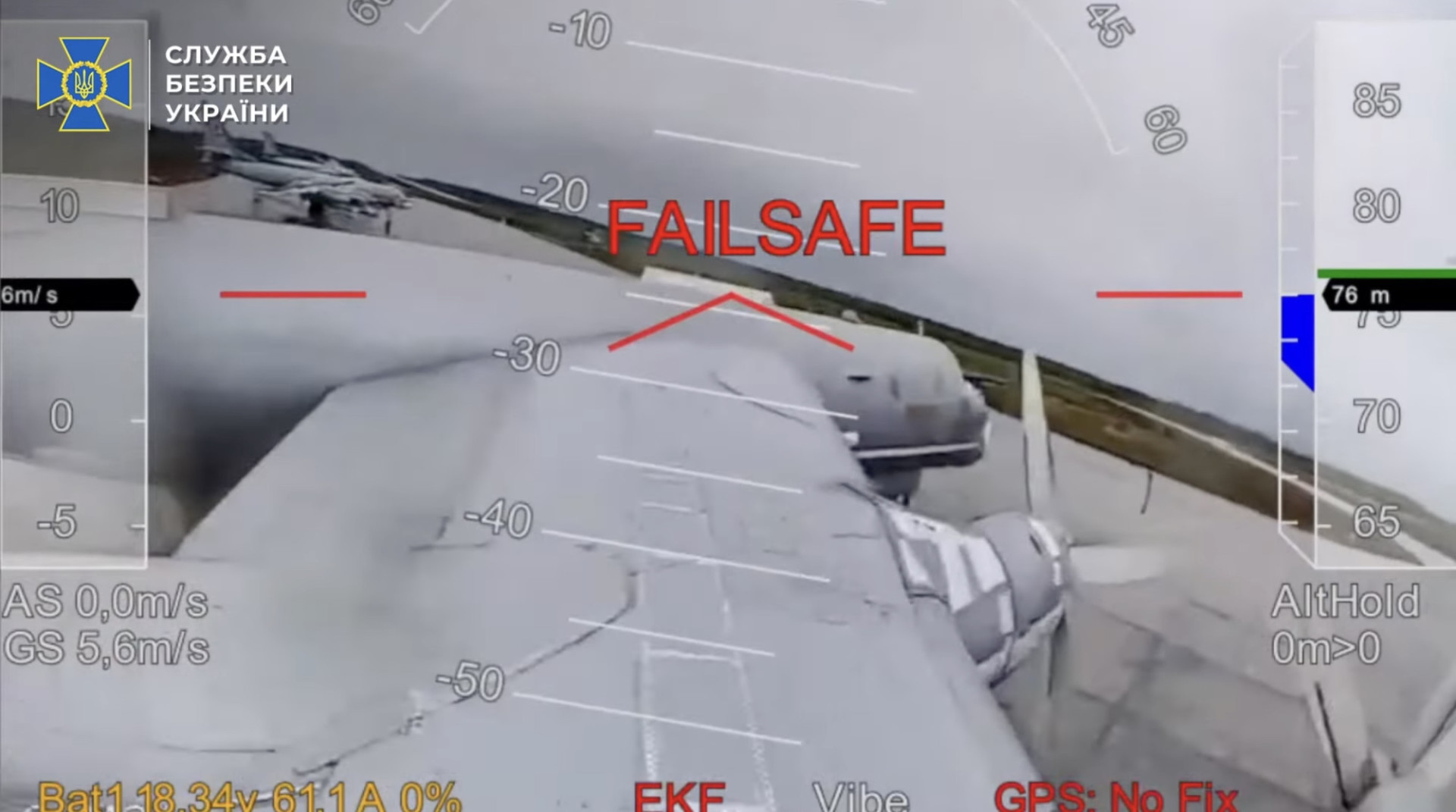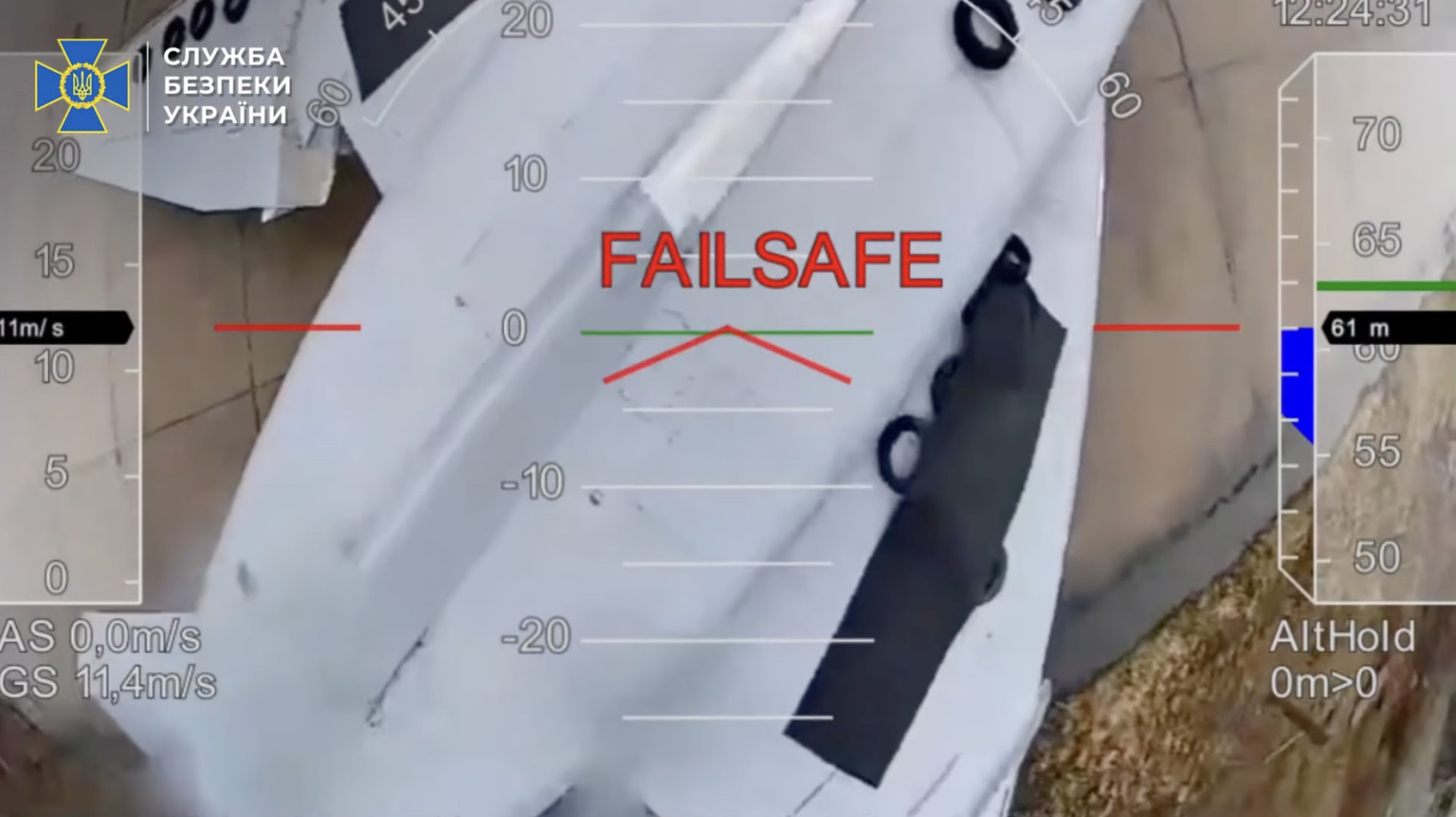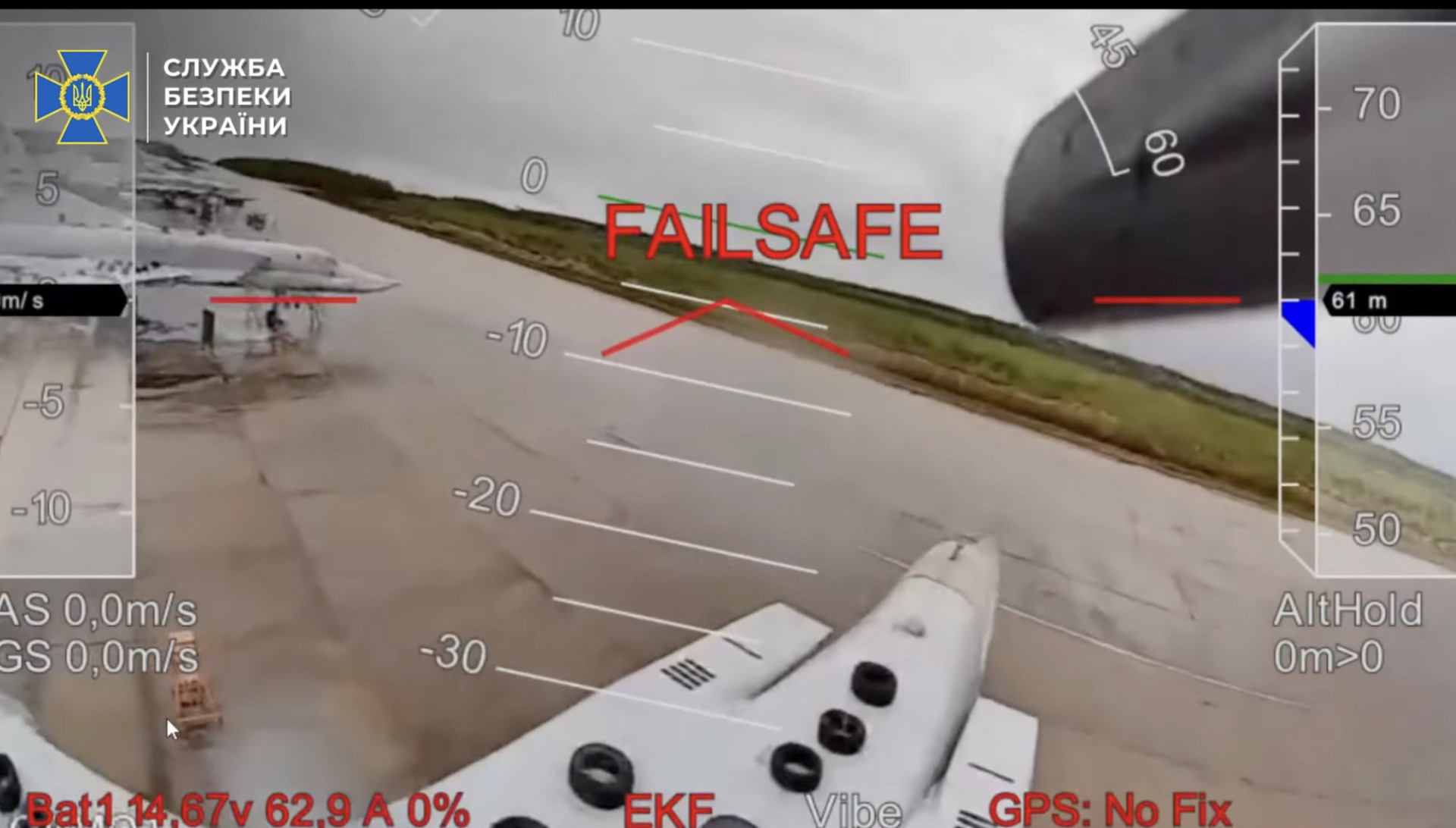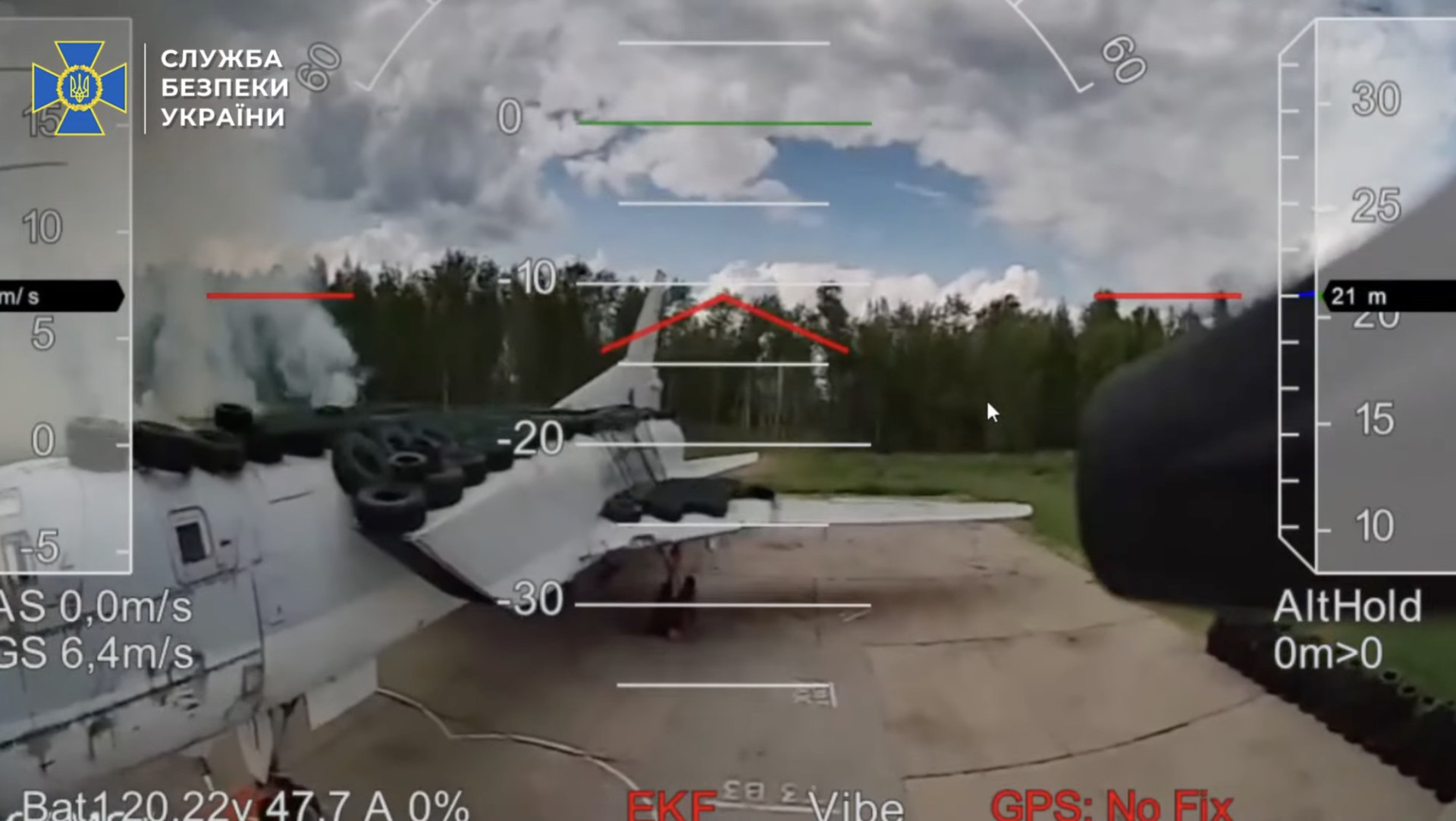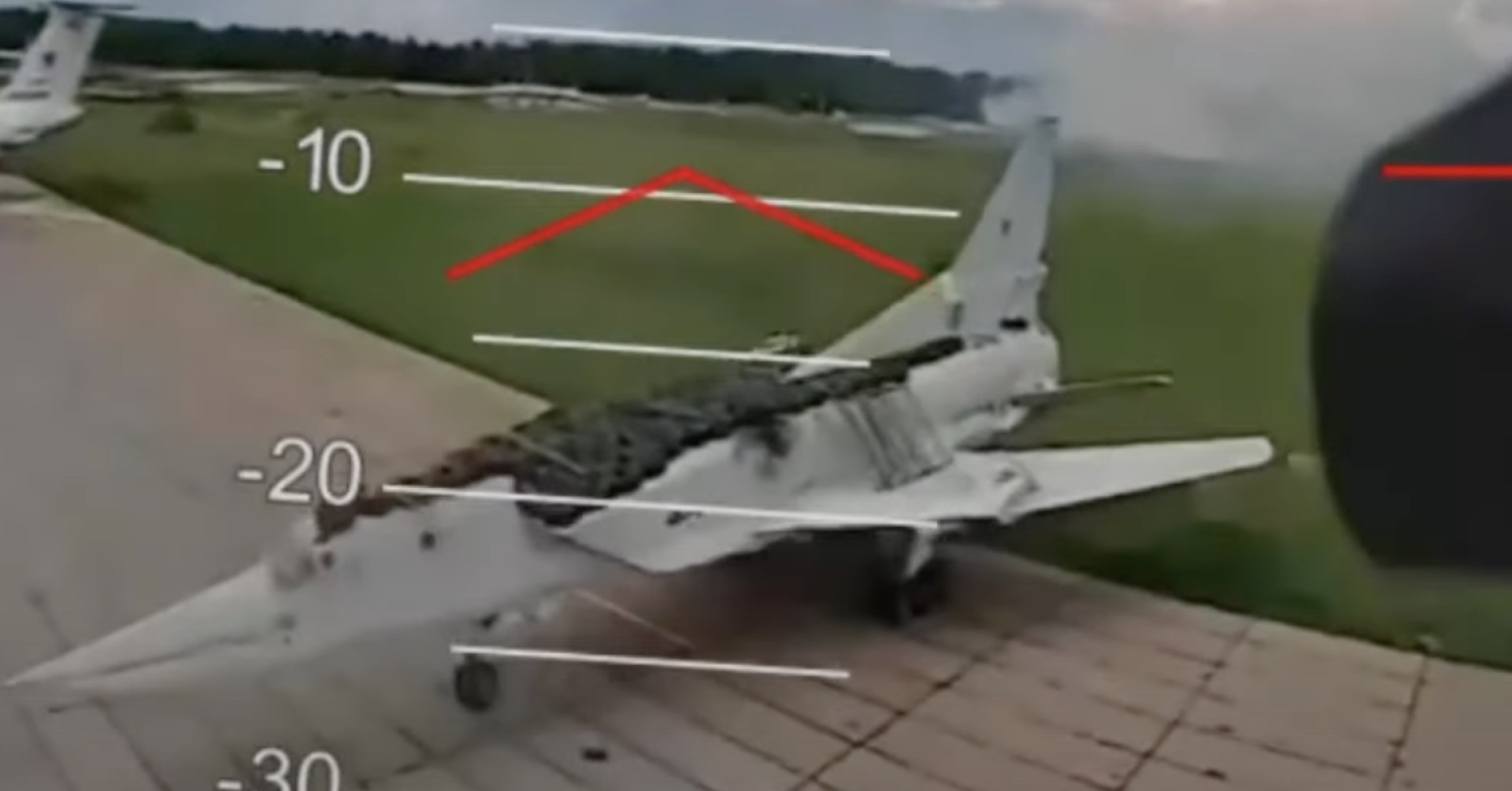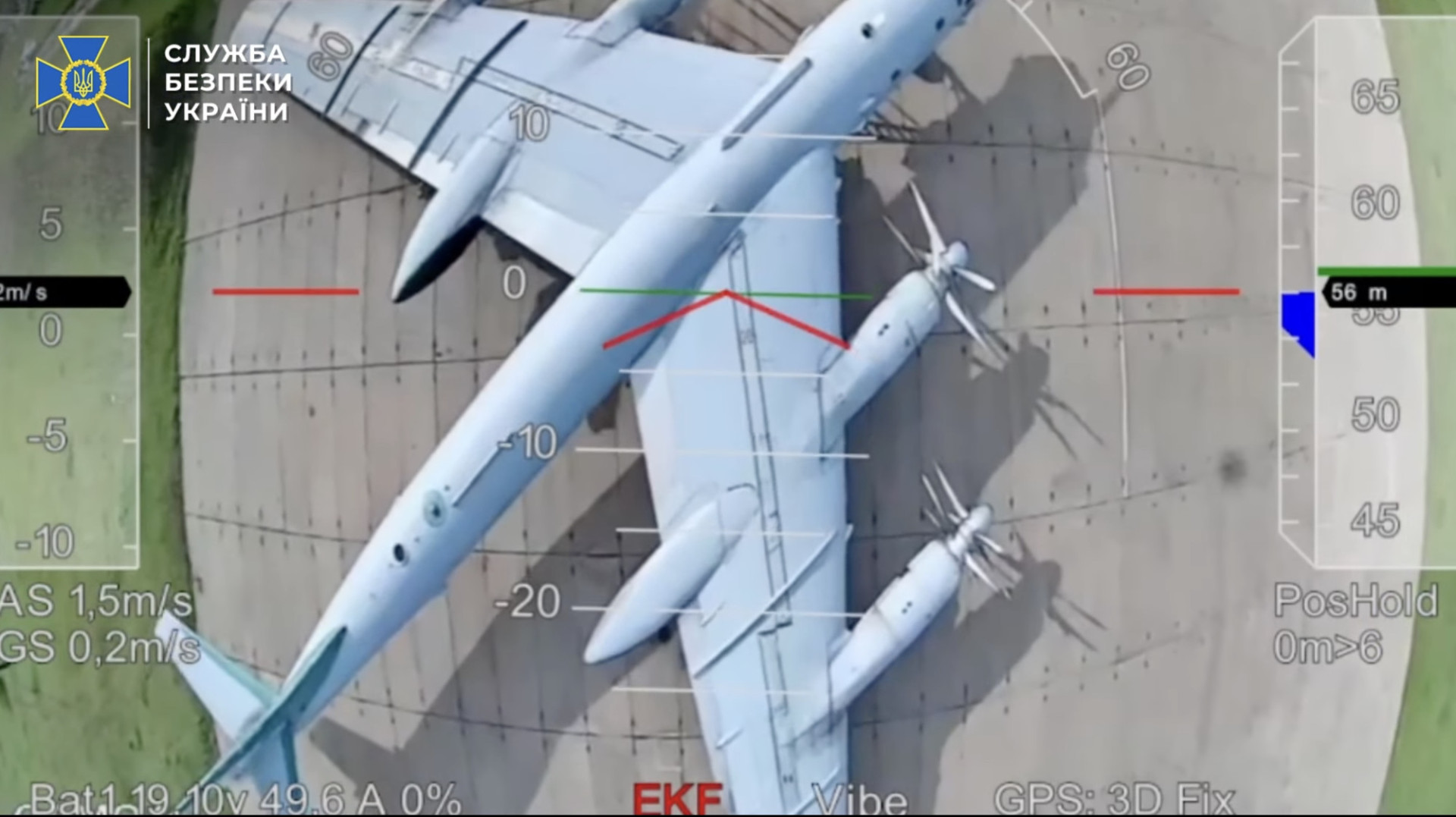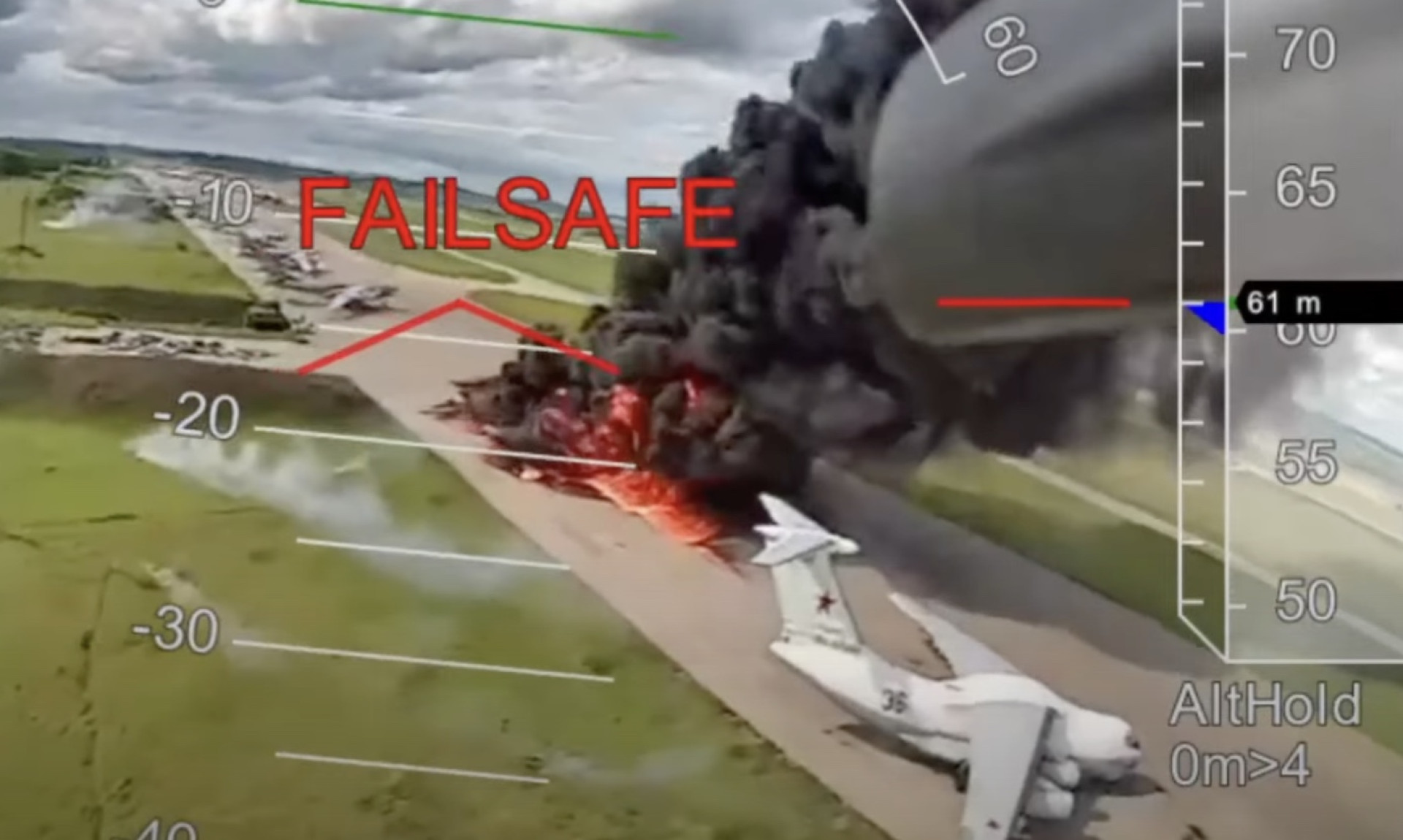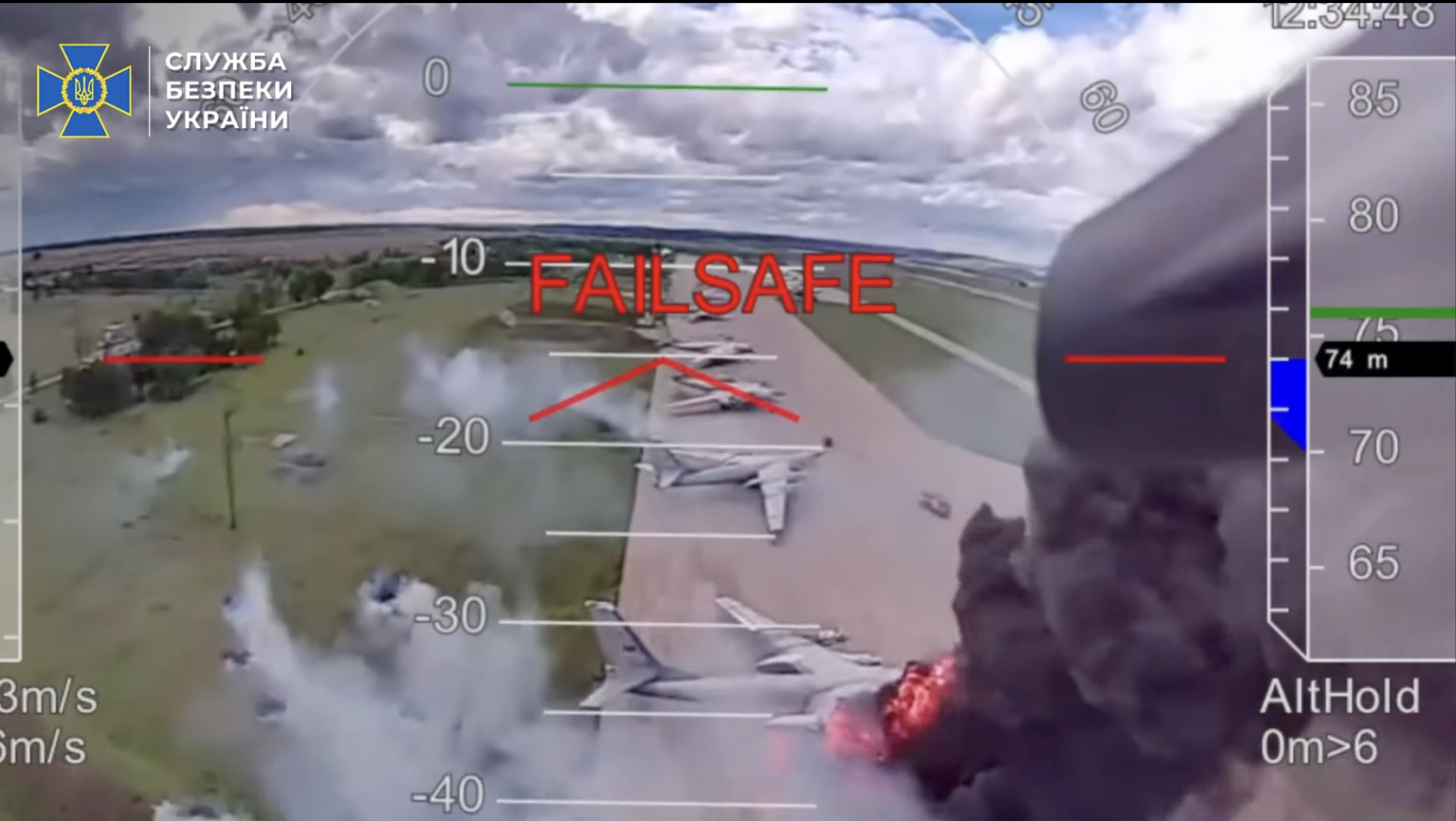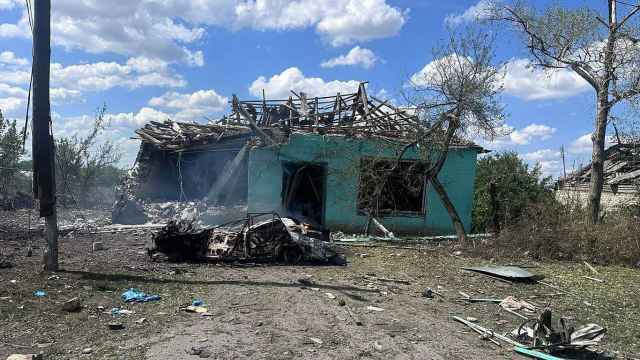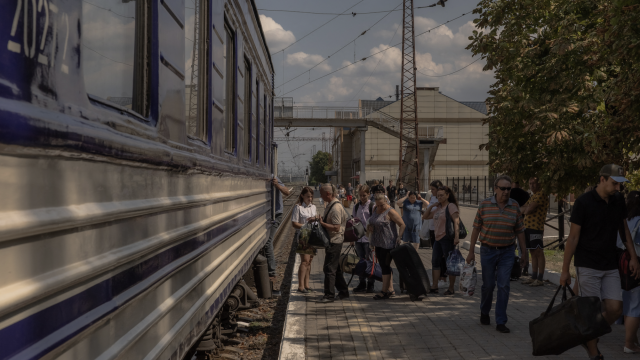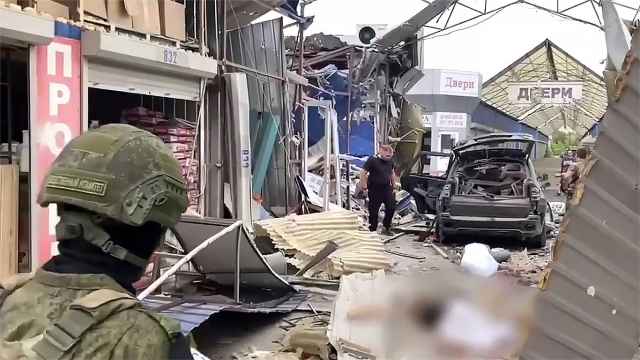Ukraine’s SBU Security Service has released four minutes of footage from Sunday’s Operation Spider’s Web drone attacks, which damaged and destroyed aircraft over 4,000 kilometers from Ukraine.

While the SBU claims to have destroyed 41 military aircraft valued at over $7 billion, independent verification has not corroborated Ukraine’s figures. But this new video casts doubts on Moscow’s side of the story and underscores the scope of Ukraine’s operation, carried out with over 100 inexpensive drones smuggled into the country and launched from adapted shipping containers.
Russia’s Defense Ministry played down the damage on the day of the attack, saying that it repelled three of the five attempted attacks. While Ukraine acknowledged the failure of the attack on the Ukrainka base in the Far East Amur region, the video released Wednesday shows that Ukrainian drones were able to enter four other airbases.
The Moscow Times has reviewed the footage and identified the types of aircraft targeted. They show burning aircraft at two locations and Ukrainian drones closing in on the jets’ weakest points.
The footage does not show the number of aircraft affected, their operational status, or their current conditions.
Olenya airfield, Murmansk region – 1,800 km from Ukraine
A May 2025 report assessed the airfield near Russia’s borders with Finland and Iceland as hosting 11 Tu-95 bombers. Some of these aircraft had been relocated from the Engels-2 air base in the Saratov region following Ukrainian air strikes.
The large Soviet-era bombers were designed to drop nuclear bombs. But today, they are equipped with up to 16 cruise missiles, which are used to target Ukrainian cities.
Ukrainian drones targeted the Tu-95s’ wings, which are the weakest points of the aircraft. Russia no longer produces these bombers, meaning they would be difficult to replace.
Footage also showed Tu-22M3 bombers being targeted at their weakest point — the fuselage.
Ukrainian drones also targeted an An-12 cargo plane.
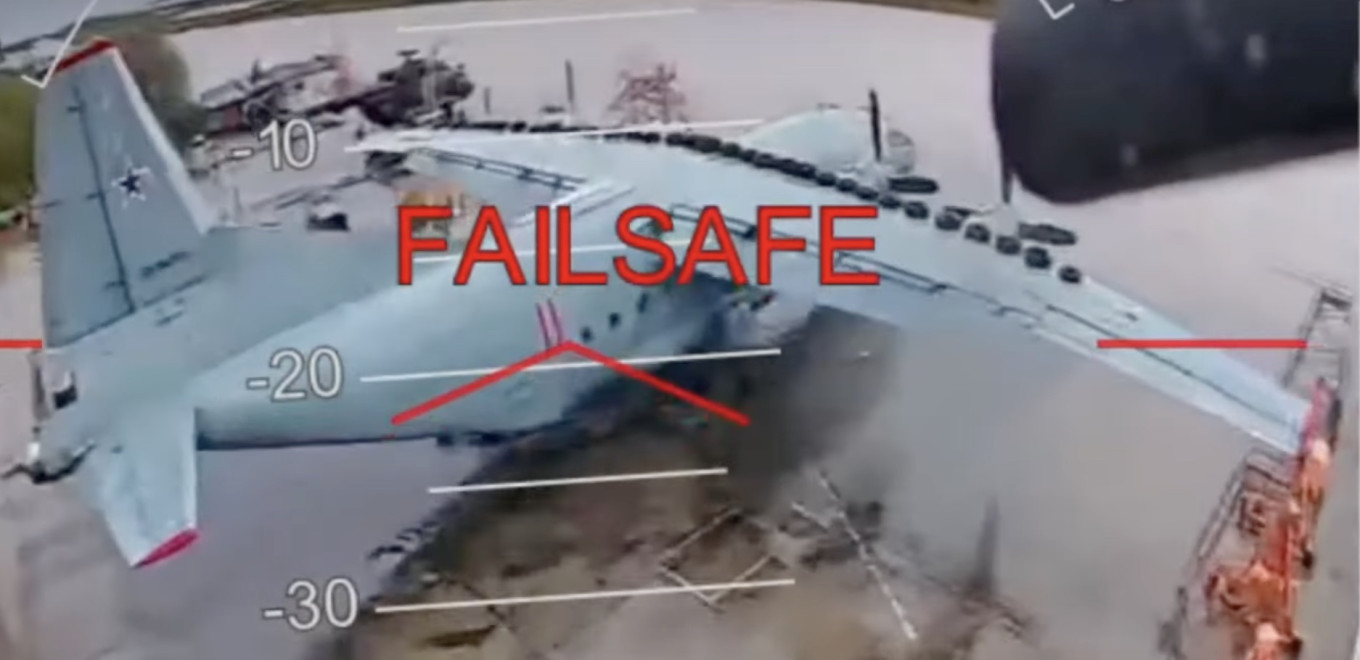
Like many aircraft at Russian air bases, the wings were covered with tires. Instead of trying to shield the aircraft from the impact of oncoming drones, this is intended to confuse AI-targeting software by making the plane harder to recognise, according to Schyler Moore, the chief technology officer at U.S. Central Command.
Severny, Ivanovo region – 800 km from Ukraine
Two clips show drones landing on the mushroom-shaped radar domes of two A-50s parked side by side before the feeds cut out. The wings of one of the planes are covered with tires and the other with what appear to be sandbags. There is no footage showing the condition of these aircraft afterward.
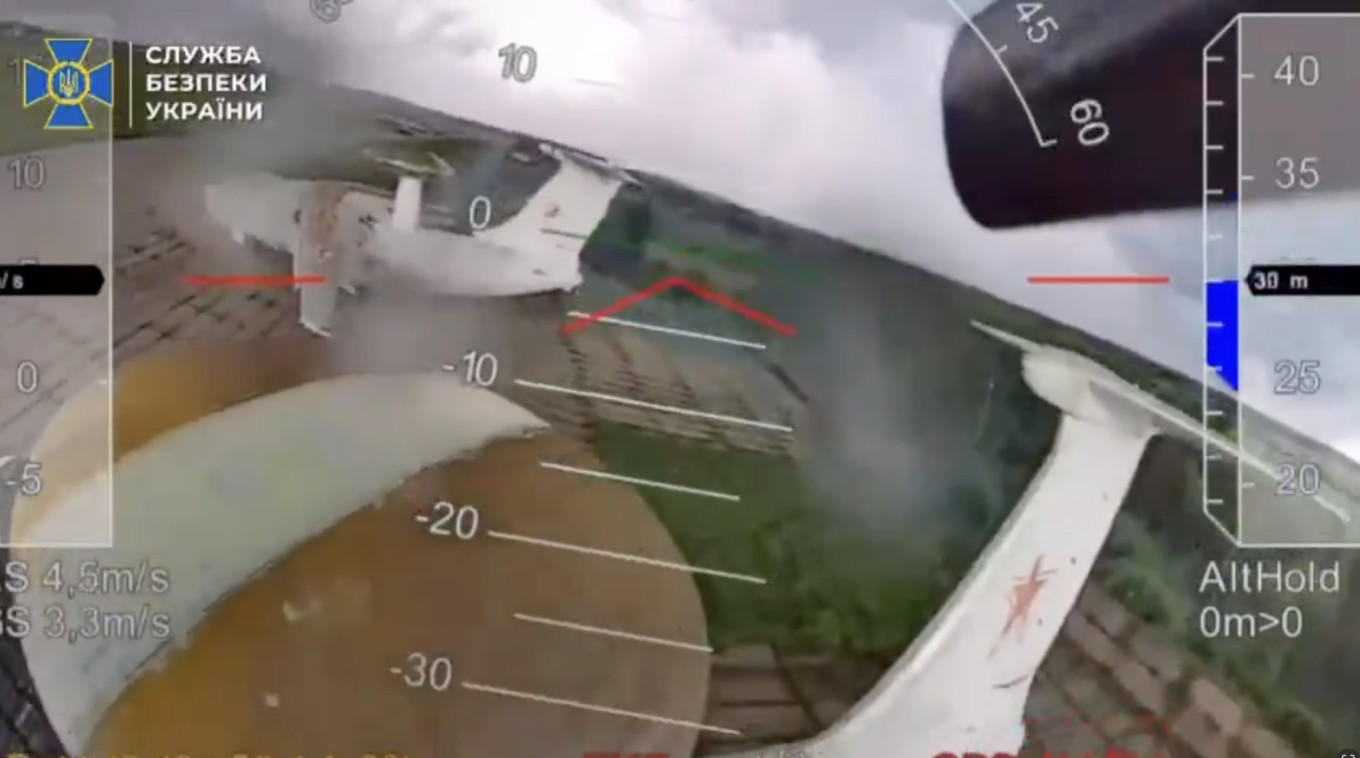
The 9-meter-wide domes contain powerful radar that detects incoming threats from Ukrainian air defense missiles and aircraft. A-50s play an important role in identifying targets for and coordinating Russia’s air forces.
The Moscow Times could not independently confirm whether these A-50s were operational.
If they were, then the Ukrainian strikes dealt an especially powerful punch to Russia because Moscow has very few A-50s to begin with. In February 2024, the head of the Ukrainian army’s intelligence directorate, Kyrylo Budanov, said that Moscow only had six of the $350 million planes in its fleet. Two A-50s were shot down by Ukraine in January and February of that year.
Dyagilevo, Ryazan region – 520 km from Ukraine
The Dyagilevo airbase serves as a training and aircraft repair center. According to the U.S.-based think tank CSIS, the SBU deliberately targeted these facilities to attack Russia’s logistics and crew readiness pipelines, which will have a longer-term impact on Russia’s air force capabilities than simply destroying as many aircraft as possible.
High-resolution satellite imagery from Monday assessed by The War Zone did not show any obvious signs of damage to any of the base’s aircraft, although damage from shrapnel would be harder to assess from that imagery.
What these pictures do show is traces of scorched grass. These are corroborated by the SBU’s footage, which shows clouds of grey smoke, suggesting drone impacts.
These screenshots of Tu-22M3 jets show burning grass, possibly from the Ukrainian quadcopter drones. Russia no longer produces these jets, which can carry up to 16 Kh-22 missiles capable of flying at 4,000 kilometers per hour.
Belaya, Irkutsk region – 4,500 km from Ukraine
The attack on the Belaya base north of the eastern Siberian city of Irkutsk is the deepest successful strike of the operation.
Open-source footage on the day of the attack, as well as in the SBU’s footage, shows thick plumes of smoke rising from damaged aircraft.
Belaya hosts the 220th Heavy Bomber Aviation Regiment of Tu-22M3 bombers, several of which are visible in the video.
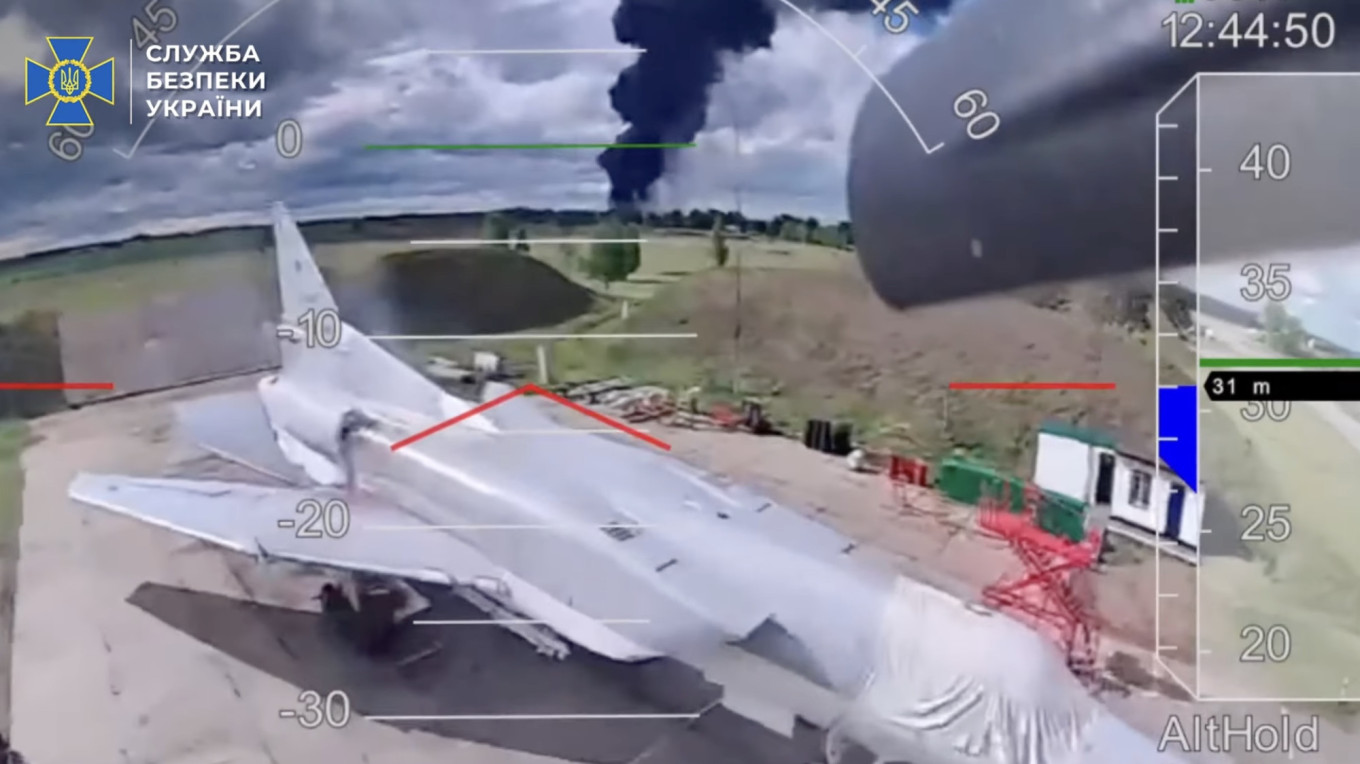
Belaya airbase also hosts an unspecified number of Tu-95s.
Analysts say that Russia's losses from Operation Spider's Web will do little to change the situation on the front line, where Russia is slowly gaining ground from grinding away at Ukraine's defenses. But they chip away at Russia's ability to conduct long-range missile strikes against Ukrainian cities.
They also send the message that nowhere in the country is safe.
On Sunday, Katarzyna Zysk, a professor of international relations and contemporary history at the Norwegian Defense Academy, told The Moscow Times, "Psychologically and symbolically, the successful targeting of such high-value assets sends a clear message about Ukraine’s ability to impose costs on Russia. Striking deep inside Russian territory undermines Russia’s image of military invulnerability and of the Kremlin’s control."
"Russia has attempted to develop a new generation of strategic bombers over the past 15 years, but these programs have been repeatedly delayed. As a result, Moscow has focused on modernizing its older fleet, now severely undermined by Ukraine’s effective strikes," she added.
A Message from The Moscow Times:
Dear readers,
We are facing unprecedented challenges. Russia's Prosecutor General's Office has designated The Moscow Times as an "undesirable" organization, criminalizing our work and putting our staff at risk of prosecution. This follows our earlier unjust labeling as a "foreign agent."
These actions are direct attempts to silence independent journalism in Russia. The authorities claim our work "discredits the decisions of the Russian leadership." We see things differently: we strive to provide accurate, unbiased reporting on Russia.
We, the journalists of The Moscow Times, refuse to be silenced. But to continue our work, we need your help.
Your support, no matter how small, makes a world of difference. If you can, please support us monthly starting from just $2. It's quick to set up, and every contribution makes a significant impact.
By supporting The Moscow Times, you're defending open, independent journalism in the face of repression. Thank you for standing with us.
Remind me later.



